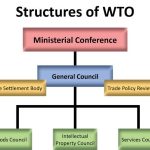
• The Europeans who came to India to trade have formed trading companies. The governments of these countries gave each of these trade companies a Charter.
• In general, the charter gave these Companies the right to go to war, sign deals, take over and live in new areas, build forts, etc. They could talk to the kings, Nawabs, and chieftains who ruled different parts of India.When the English got stronger, they began to take over India. By 1856 or 1857, the British East India Company had control over all of India except for Goa, Diu, and Daman, which were still under Portuguese control, and Pondicherry, which was still under French control.The British government helped this trade company reach its goals by giving it advice and support. At first, the British Company set up a few trading hubs, which they called “factories” but were really “forts,” with permission from the relevant authorities. So, the people in the Company who were merchants also became fighters.
Table of Contents
The rise and fall of the British Paramountcy
Lord Warren Hastings was the first de facto Governor-General of India from 1773 to 1785. From the beginning of the 1800s, when Lord Hastings was the first Governor General of India, the British East India Company aggressively expanded its territory.
• Under the policy of paramountcy, the company said that its power was greater than that of Indian states because it was the highest authority. It used a number of wars to slowly take over the country’s government.
• The order of the events that led to the British taking control of India is as follows:
After winning the three Deccan Wars in 1746–1748, 1748–1754, and 1756–1763, the English drove the French out of South India and became the most powerful country there.
Bengal, Bihar, and Orissa were taken over by the English after the fights of Plassey (1757) and Buxar (1764).
By Pitt’s India Act of 1784, the British government took control of the East India Company’s political and administrative operations.
The British government told Lord Cornwallis to take over a large part of Tipu Sultan’s land, which he did.
Lord Wellesley used the strategy of “Subsidiary Alliance” from 1798 to 1805 to give the British control of Hyderabad and direct control over Gwalior, Baroda, Indore, Nagpur, and Poona.
Lord Hastings put down the Marathas, the Central States of Rajputana, and the Gurkhas of Nepal between 1813 and 1823.
The Burmese were beaten by Lord Emherst, who took over for Hastings.
By the time of the two Sikh Wars in 1845–46 and 1849, the British had taken over the Punjab.
The principality of Oudh was taken over by the British in 1856.
Under Lord Dalhousie, who became Governor-General of India in 1848 because of the “Doctrine of Lapse,” the British took over a number of smaller states.
After the British took over these places, Goa, Daman and Diu, Dadra and Nagar Haveli, and Dadra and Nagar Haveli stayed in Portuguese hands, and Pondicherry, Mahe, and Karaikal stayed in French hands.
On November 1, 1858, the British Crown took over the government of India from the East India Company.
The above timeline shows how the Indians lost their independence and came to be ruled by the East India Company and then by the British Government.
Economy and Policy under British Paramountcy
• In the year 1800, India was responsible for a huge 20% of the world’s industry output. But by 1900, India was known for being poor. Its products made up only 1.7% of all world trade, and more than 30 million people (more than 10% of India’s population) died of hunger during the 82 years that the British ruled India.In his book “The Rise and Fall of Great Powers,” Paul Kennedy gives the following numbers to show how the fortunes of the British and the Indians changed between 1750 and 1900. The change also happens at the same time as the rise of British power in India.
• After 1818, when the British took over as the most powerful country in India, Indian manufacturing quickly went down while British manufacturing went up. This can be linked to the rise of British rule in India and how well India did at the time.
In 1757, the British took over Bengal and Bihar. In 1799, they took over Mysore. In 1818, the Marathas, the biggest power in India at the time, gave up. In 1849, the British took over the Sikh kingdom of Punjab. Once they were in charge, the British rulers made sure that British trade and commerce grew at the expense of Indian trade. The Indian trade was ruined by rules that made it hard for them to do business.
During the early stages of the Industrial Revolution, Indian goods that were very competitive were charged duties of 70 to 80%. Even later, British goods made by machines were charged 10 to 27% less in duties than Indian goods made by hand.
• Wilson, a British historian of India, says, “It was stated in evidence in 1813 that cotton and silk goods from India could be sold for a profit in British markets at prices 50 to 60 percent lower than those made in England… Without the 70 and 80 percent tax on the value of Indian textiles, the mills in Paisley and Manchester would never have started up.
• A Parliamentary committee report from 1840 says that British cotton and silk goods went into India with a duty of 3.5% and woollen goods with a duty of 2%. However, Indian cotton, silk, and woollen goods went into Britain with a duty of 10%, 20%, and 30%, respectively.
The Policy of Subordinate Isolation
• With the arrival of Lord Hasting, ties with the princely states moved into a new phase. He wanted the British to be in charge of the Indian Princely states.Instead of treating them as equals in his deals with them, he forced them to work together in a subordinate way. The prices no longer had any control over the outside world. Even when it came to things that happened within the country, British people meddled and told the rulers what to do.
• Lord Hastings wrote in his private journal, “Instead of acting as an ambassador, he (Resident) takes on the role of a dictator. He meddles in all of their private affairs, let rebellious subjects work against them, and made the most ostentatious show of his power.”
Lord Hastings put 145 states in central India, 145 states in Kathiawar, and 20 states in Rajputana into the subsidiary system.He didn’t want to take over these states, but he did want to put them in a state of isolation. Wherever a subsidiary system was put in place, masters became careless and bad management was common.
• The treaties recognised and made sure that princely states could exist as different entities, but in practise, many princely states were taken over.
• In 1841, the Court of Directors told the Government of India not to give up any “just and honourable accession of land and revenue. The reason for annexation was that the local leaders were not running things well.
• After Lord Hastings left office, the company’s power in the states’ internal government grew quickly in the years that followed.
• Most of the time, the British Residents were the only way for the government of India to talk to the heads of the Indian states. Over time, their power and status grew. Dalhousie took over the land because of two things: the theory of lapse and bad management by the native rulers.
• The East India Company took charge of India when it kept saying that it was the most important and when it started letting subordinates work together.
• So, the British residents in each state were in charge of all of the administrative and armed tasks for that state. The charter Act of 1833 told the company to focus on its trading business. With this act, the company’s attitude towards the Indian states changed in a big way.
• In 1834, the court of directors set the policy of annexing states whenever and wherever possible. During this time, the governor-generals were true “annexationists.” Annexing the regions was the main way that the British grew their territory. But the annexations were done to get a new source of revenue or because the Indian states’ natural heirs failed to run them well. • Even after the East India Company established its undisputed supremacy in 1818, the relationship between the Indian states and the Company was chaotic, unclear, and contradictory.
Conclusion:
• The Governor-General’s policy on paramountcy is a claim to supremacy that Indian people have argued against. •The policy was made to give India a clear and concise way to run its government, but it has been criticised by people who say the Constitution of India gives India a more fair way to run its government.Even though people are against it, the paramountcy policy is still in place, and its effects are still felt throughout Indian society.


![UPSC CSE Topper Mains Answer [Part 1] images-2023-06-17T191749.185](https://iasbio.com/wp-content/uploads/2023/06/images-2023-06-17T191749.185-150x150.jpeg)




![Ancient History Notes for UPSC [Part 10] Gupta Empire images-2021-07-17T113823.815](https://iasbio.com/wp-content/uploads/2021/07/images-2021-07-17T113823.815.jpeg)








